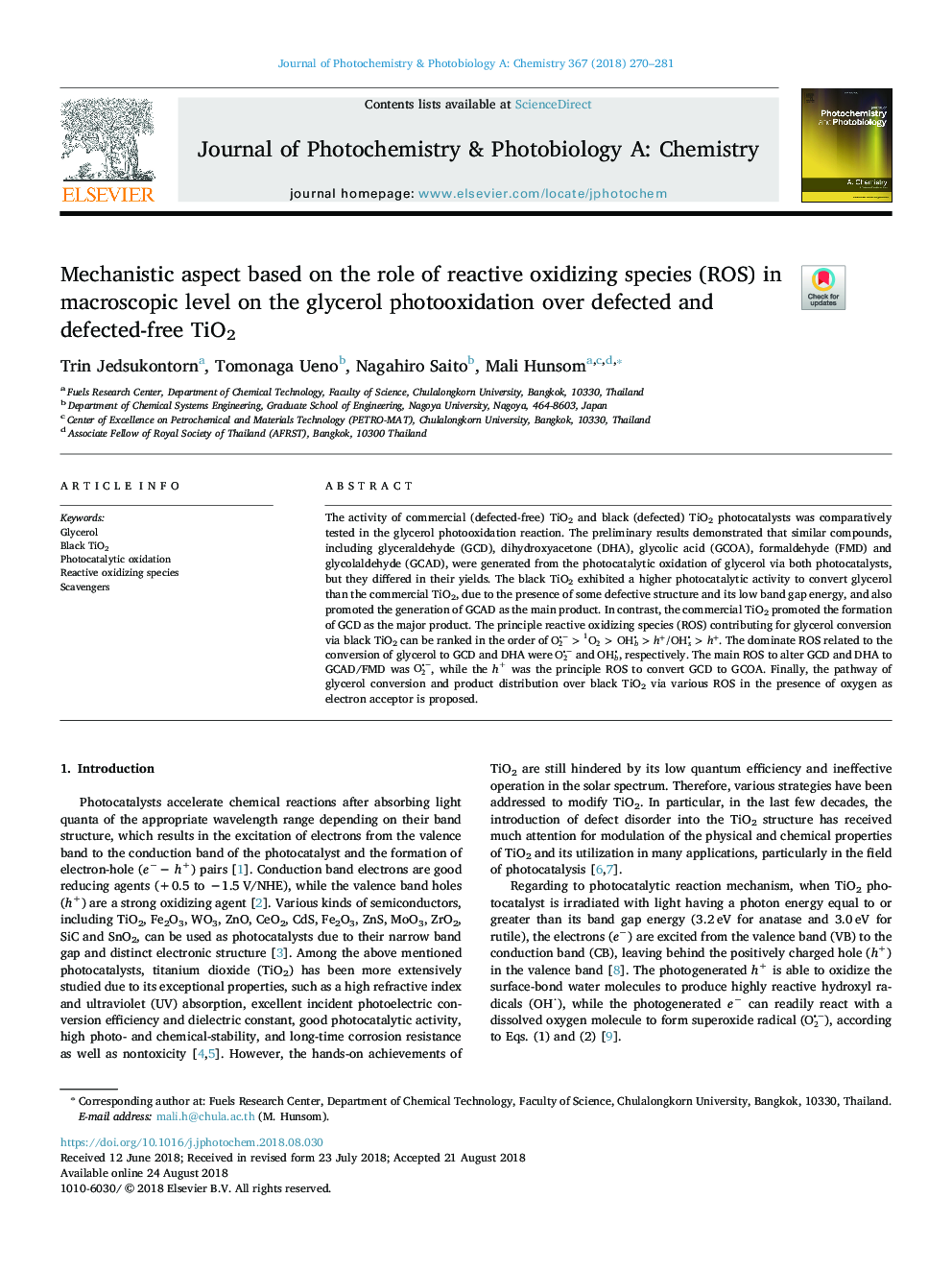| Article ID | Journal | Published Year | Pages | File Type |
|---|---|---|---|---|
| 9951598 | Journal of Photochemistry and Photobiology A: Chemistry | 2018 | 12 Pages |
Abstract
The activity of commercial (defected-free) TiO2 and black (defected) TiO2 photocatalysts was comparatively tested in the glycerol photooxidation reaction. The preliminary results demonstrated that similar compounds, including glyceraldehyde (GCD), dihydroxyacetone (DHA), glycolic acid (GCOA), formaldehyde (FMD) and glycolaldehyde (GCAD), were generated from the photocatalytic oxidation of glycerol via both photocatalysts, but they differed in their yields. The black TiO2 exhibited a higher photocatalytic activity to convert glycerol than the commercial TiO2, due to the presence of some defective structure and its low band gap energy, and also promoted the generation of GCAD as the main product. In contrast, the commercial TiO2 promoted the formation of GCD as the major product. The principle reactive oxidizing species (ROS) contributing for glycerol conversion via black TiO2 can be ranked in the order of O2
- ->O12>OHb
- >h+/OHs
- >h+. The dominate ROS related to the conversion of glycerol to GCD and DHA were O2
- - and OHb
- , respectively. The main ROS to alter GCD and DHA to GCAD/FMD was O2
- -, while the h+ was the principle ROS to convert GCD to GCOA. Finally, the pathway of glycerol conversion and product distribution over black TiO2 via various ROS in the presence of oxygen as electron acceptor is proposed.
- ->O12>OHb
- >h+/OHs
- >h+. The dominate ROS related to the conversion of glycerol to GCD and DHA were O2
- - and OHb
- , respectively. The main ROS to alter GCD and DHA to GCAD/FMD was O2
- -, while the h+ was the principle ROS to convert GCD to GCOA. Finally, the pathway of glycerol conversion and product distribution over black TiO2 via various ROS in the presence of oxygen as electron acceptor is proposed.
Related Topics
Physical Sciences and Engineering
Chemical Engineering
Bioengineering
Authors
Trin Jedsukontorn, Tomonaga Ueno, Nagahiro Saito, Mali Hunsom,
